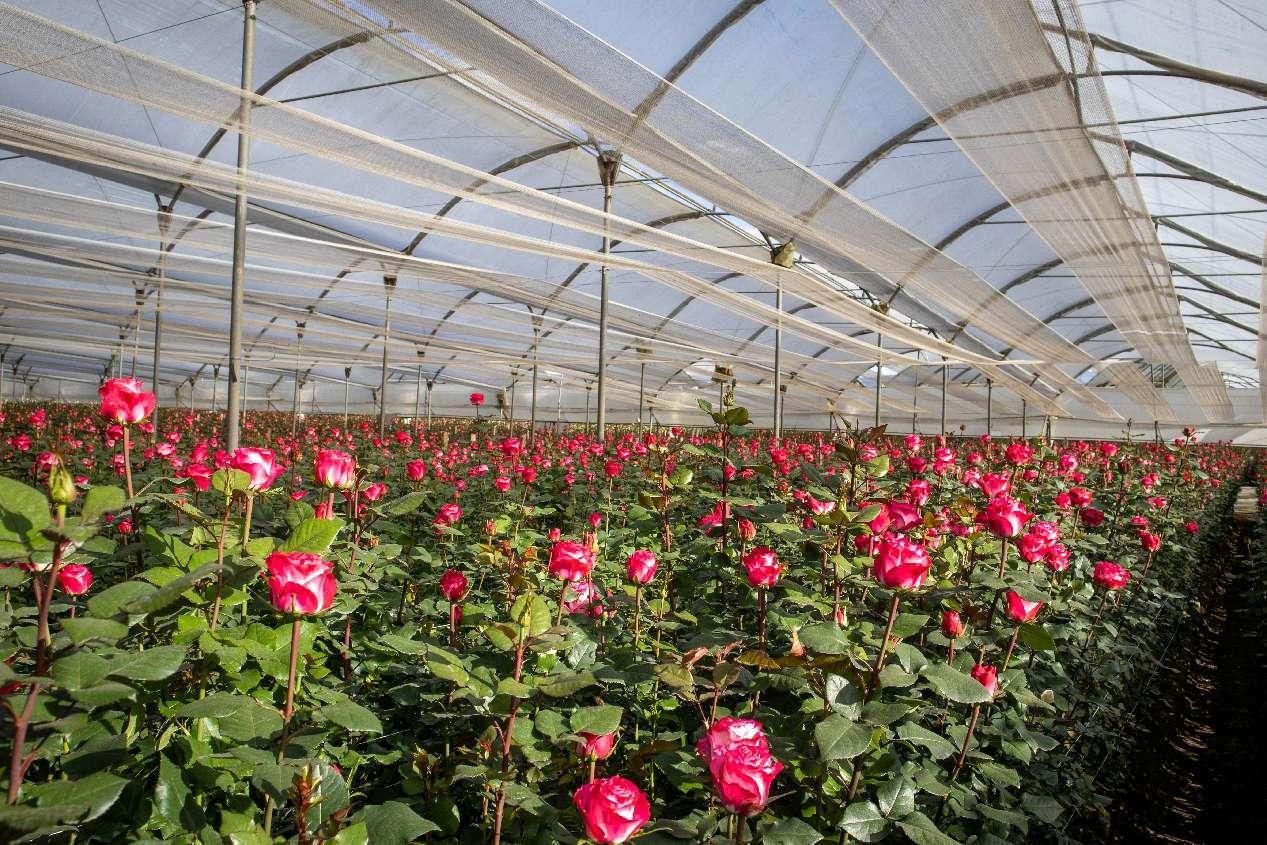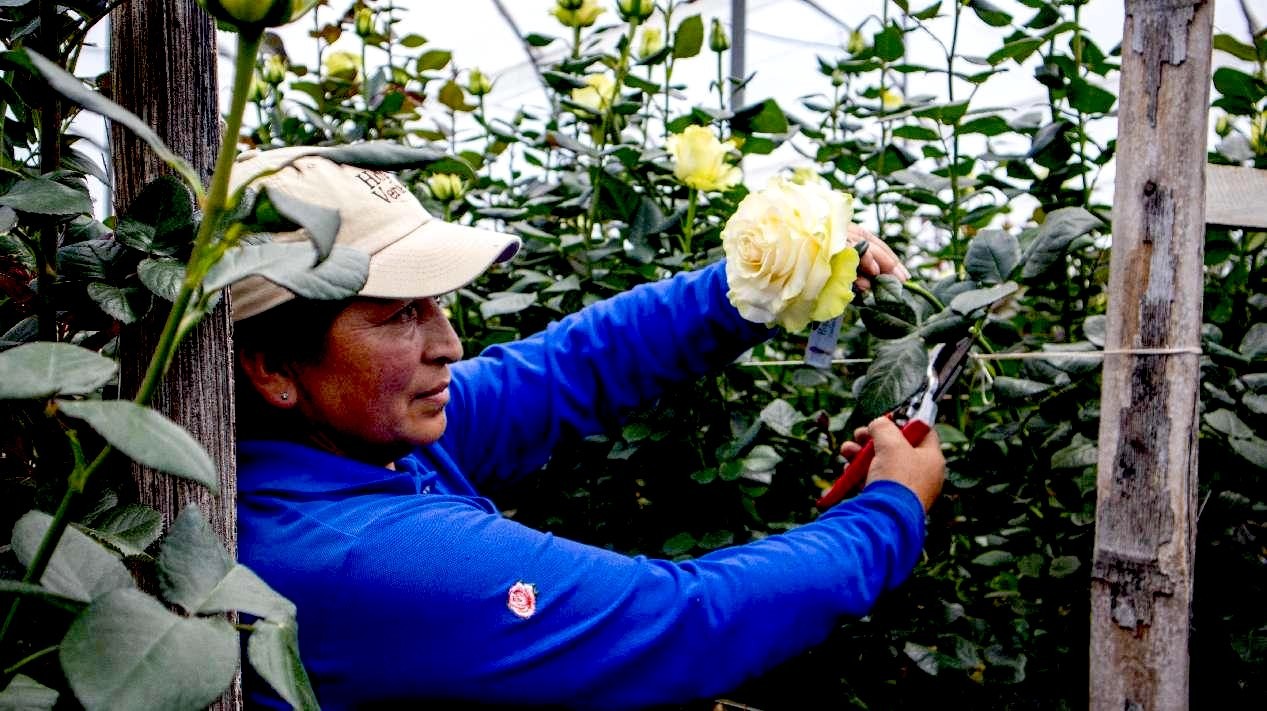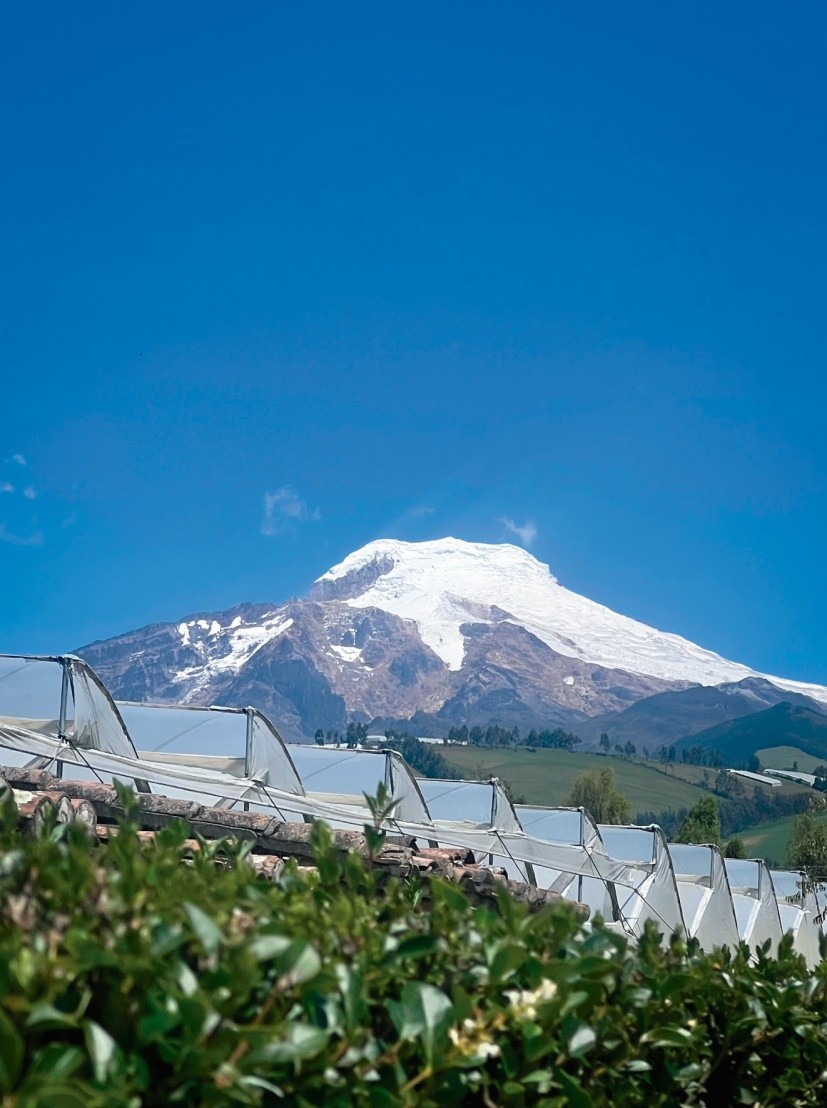当前位置 : International Daily News
 发布日期:2025/6/7
发布日期:2025/6/7
 来源:International daily
来源:International daily
 打印
打印
By Shi Yuanhao
People's Daily app
15:53, May 22, 2025
Quito (People's Daily) – At the foot of Cayambe volcano in Ecuador -- where the equator meets the Andes -- rose farm Hoja Verde workers begin their day at 6 a.m., harvesting flowers bound for global markets. The region, one of Ecuador's most productive rose-growing areas, is dotted with such farms, supported by the country's high altitude, abundant sunlight and favorable climate.
"Ecuador's natural conditions give our roses exceptional quality," said Hernan Davila, sales manager at Hoja Verde.
"They've been in high demand in China for years."

A stunning rose greenhouse at Hoja Verde, where vibrant blooms thrive in Ecuador's ideal growing conditions. (Photo: Joselyn Gutiérrez/People's Daily)
From the moment each stem is cut, the race is on to deliver fresh roses to consumers. Workers quickly disinfect and package the flowers before loading them onto trucks bound for the airport. There, boxes are stored in refrigerated containers at temperatures between 2 and 8 degrees Celsius before being flown overseas.
During peak seasons, roughly 30 flights depart daily from Quito, Ecuador's capital, carrying fresh-cut roses worldwide. A typical shipment to Beijing involves two transfers and takes about 40 hours. With the support of a "green channel" for fresh-cut flowers, customs officials in China offer expedited processing and round-the-clock inspection services. From harvest to customs clearance, the journey takes just 1.5 hours -- and within three days, Ecuadorian roses can travel from farm to vase in the hands of Chinese consumers.
The surge in Ecuadorian rose exports to China underscores the growing strength of bilateral trade ties. China has long been Ecuador's second-largest trading partner and the top destination for its non-oil exports. On May 1, 2024, the two countries' free trade agreement (FTA) officially came into force. Since then, approximately 90 percent of the products traded between China and Ecuador have been exempted from tariffs.

A dedicated worker expertly harvests exquisite roses at Hoja Verde, contributing to Ecuador's reputation as a leading rose exporter. (Photo: Joselyn Gutiérrez/People's Daily)
Furthermore, tariffs on Chinese imports of products like bananas, white shrimp, fish, fish oil, flowers, cocoa and coffee from Ecuador have been reduced to zero from the original rates of between 5 percent and 20 percent.
According to Beijing customs, since the agreement took effect, customs officers at Beijing Capital International Airport have cleared 128 shipments of Ecuadorian roses -- totaling about 500,000 stems and over 40 metric tons of fresh-cut flowers.
"Since Chinese Valentine's Day is celebrated on different dates from those in many other countries, China has become an important off-season market for Ecuadorian roses," said Andres Mancero, head of Valdani Trading, a long-time exporter to China.
Having lived in China for several years, Mancero sees immense potential in the market.
"As tariffs on fresh-cut flowers gradually fall to zero, Ecuadorian roses will become even more price-competitive," he noted.
Wang Lei, head of a Beijing-based foreign trade company, stated, "The agreement has helped us save nearly 60,000 yuan ($8,306) in tariffs and related costs so far. Roses from Ecuador are now one to two yuan cheaper per stem, making them more accessible to Chinese consumers."
The impact of the FTA has been felt more broadly across trade figures. According to China's General Administration of Customs, bilateral trade between China and Ecuador reached $3.915 billion in the first quarter of this year, a 34.17 percent increase year-on-year. Chinese imports from Ecuador totaled $2.339 billion, up 42.8 percent from the same period last year.
The National Aquaculture Chamber of Ecuador reported that white shrimp, the country's top export to China, generated $280 million in sales in January this year alone, a 25 percent increase year-on-year.
On its official website, Ecuador's Ministry of Production, Foreign Trade, Investment and Fisheries described the FTA with China as "a strategic opportunity," highlighting China's role as the world's largest food importer.
"Ecuador produces high-quality seafood, fruits, and grains," said Mancero, adding that Chinese consumers are becoming increasingly open to premium imported goods.
"We hope to expand from roses to other sectors," he said.

A picturesque view of Hoja Verde, nestled at the foot of the Cayambe volcano, showcasing the beauty of Ecuador's rose-growing landscape. (Photo: Joselyn Gutiérrez/People's Daily)
Quinoa, blueberries and pineapple exporters are already applying for the necessary plant quarantine and sanitary certification in China to benefit from the new tariff exemptions.
In February this year, Ecuador sent its first zero-tariff shipment of canned tuna to China.
"China has an enormous demand for premium seafood. Ecuadorian tuna has the potential to become as popular as our shrimp," said Ricardo Herrera, head of Tecopesca, a company involved in Ecuador's tuna exports to China.
Herrera believes the trade agreement will offer consumers in both countries more diverse choices and foster shared prosperity.
"Many Ecuadorian growers of yellow dragon fruits and blueberries are now using supplemental lighting systems made in China to boost yield and quality," said Zhang Pengxiang, an Ecuador-China Chamber of Commerce board member. As tariffs on Chinese machinery, electronics, vehicles and components continue to fall, Chinese products are increasingly crucial in Ecuador's push for industrial modernization.









